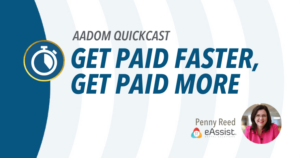How to Eliminate Patient No-Shows Through Marketing
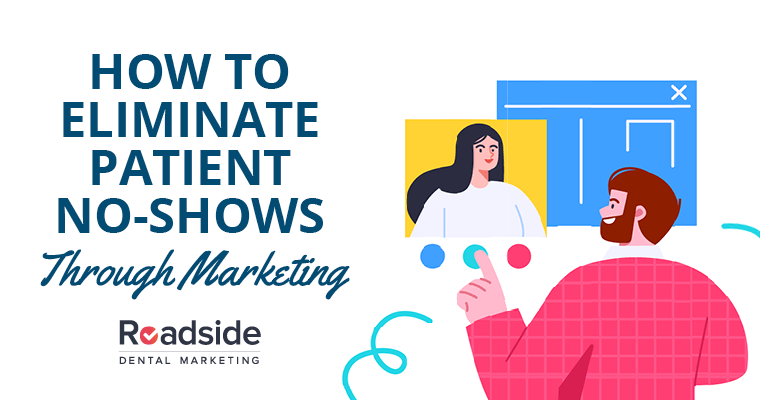
Nothing screws up the schedule more than a potential patient not showing up for their appointment.
You put all that work in to get a patient to agree to treatment, and then… nothing. A huge waste of time, right?
But in truth, this sort of situation is a huge marketing opportunity.
How?
Marketing is about understanding the patient’s needs and desires. When patients consistently don’t show up, it’s because you aren’t addressing those wants and needs as well as you could.
Once you start speaking their “language,” it changes their perception of your dental office. In other words, they’ll want to show up to their appointment.
Today, we’ll show you:
- Why people aren’t showing up to their appointments
- How to nail your onboarding calls and consultations to maximize show rates
- Ways to quickly fill your schedule with reliable patients you’ll love
So, how can you use marketing to never deal with unexplained no-shows again?
Let’s find out.
Why No-Shows Are Marketing Opportunities in Disguise
Let’s consider the mindset of a potential patient – specifically, the type of person who might not show up to an appointment (i.e. not Carol, your 5-year super-client who loves you).
They’ve seen your ads. They’ve checked your website. Your practice looks… “fine,” but they know next to nothing about how good you really are.
They definitely know they need treatment (whether they’re in pain or just overdue), but they aren’t sure you’re the best person for the job. Plus, dentistry is a big commitment, both in terms of finance and comfort/anxiety.
So, your patient is looking for a personal connection and reassurance that your practice is exactly what they need.
If you can’t understand that mindset and give them what they’re looking for, there’s a good chance they’ll get cold feet.
It’s like asking someone to marry you on the first date. That’s a huge leap, and they know nothing about you!
That’s where your front office staff comes in.
Marketing is all about building relationships with your clients, and that starts with whoever takes the ever-critical first call.
That call acts as your “emotional first impression.”
Yes, they’ve seen your website, yes, they know where your practice is, but you still need to build real rapport and trust with them.
If you’re truly advocating for the patient and connecting with them on a personal level, they’ll be far more confident that your office can give them the comfort and quality care they deserve.
Simple, right?
Getting Patients to Show Up to Their Appointments
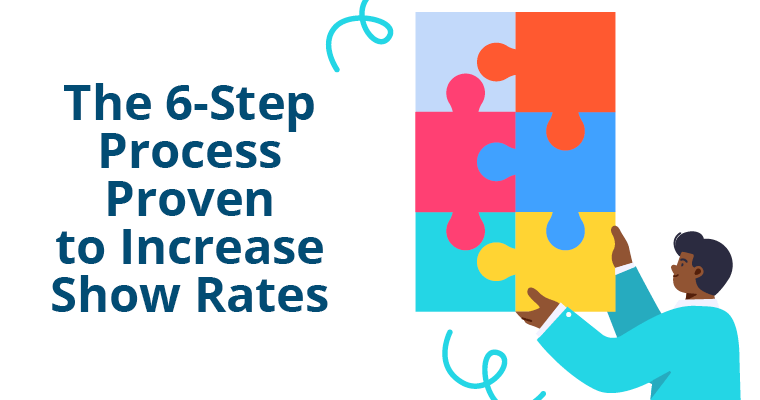
So, how do you go about making sure people WANT to show up for their appointment?
There are two six-step processes to follow – one for onboarding calls, and one for treatment consultations.
The Perfect Onboarding Call
It all starts with nailing that first call.
Fortunately, marketing is a science, so there are already time-tested methods for structuring onboarding calls. Here’s how it works:
- Step 1: Figure out why they’re inquiring. Always, always lead with this – it shows that they’re your first priority.
- Step 2: Ask about their symptoms. How long have they been in pain? And more importantly, how is that pain limiting their day-to-day activities? Try to connect on a personal level and understand how it’s really affecting them.
- Step 3: See what they’ve already done. What have they tried to relieve their pain? Have they already seen a professional, or are they contacting you first?
- Step 4: Build empathy and credibility. Make it clear that you understand their situation and can offer real help. Don’t rush them through the process – make sure they’re educated and truly confident that you’re the right choice for their treatment.
- Step 5: Book the appointment. This is the victory lap, but stay focused (and empathetic). Do your best to be understanding and emphasize wanting to help them with their situation.
- Step 6: Follow up. Don’t end the call abruptly, wait three weeks, and wonder why they didn’t show up. Plan to touch base occasionally and offer reminders for their appointment. Automation works wonders for this stage!
For more details on every step of this process, download our (completely free) new patient enrollment cheatsheet…Click to open a new window…. It’s a great resource to print out and tape to your desk, so you’ll always have it on hand to guide you through the onboarding process!
Conducting Consultations That Work
The process of building rapport doesn’t end when a patient shows up to discuss treatment!
That means you need to achieve 1.) emotional connection and reassurance, and 2.) clear expectations for (and confidence in) treatment. Here’s how to do both at the same time:
- Step 1: Talk about the agenda. Let your patient know what to expect for the consultation so they aren’t in the dark about the topics you’ll cover.
- Step 2: Talk about why they’re there. Talk about their current situation and why they’ve come to you for a consultation. Empathize with the difficulties they’ve faced and try to understand every aspect of their situation.
- Step 3: See what they’ve tried. Talk about their attempts to manage things so far. This not only shows you care, but also helps to reassure them that you can offer better solutions.
- Step 4: Identify their desired outcome. Don’t just assume you know what the patient wants. You need to know what their desired end goal is, then offer treatment accordingly.
- Step 5: Identify their motivation to change. Many practices miss this, but you need to understand the emotional reasoning for them to follow through. Is it restoring their confidence? Getting through the day without pain? Re-engaging with activities they’re missing out on?
- Step 6: Acknowledge the patient and transition. Make it clear you understand the patient’s pain and want to help. Now, you can transition into the nitty-gritty of discussing treatment while benefitting from a strong foundation of emotional connection.
It may seem like a lot of work to build trust with a new patient, but it’s worth it. Taking the time to show you care gets people to show up more often than not.
How to Schedule More Appointments (The Easy Way)
No-shows aside, you need to schedule an appointment before a patient can even choose to show up.
So how can you fill your calendar with quality patients?
Well, you take advantage of something that you already have at your disposal… your current patient database!
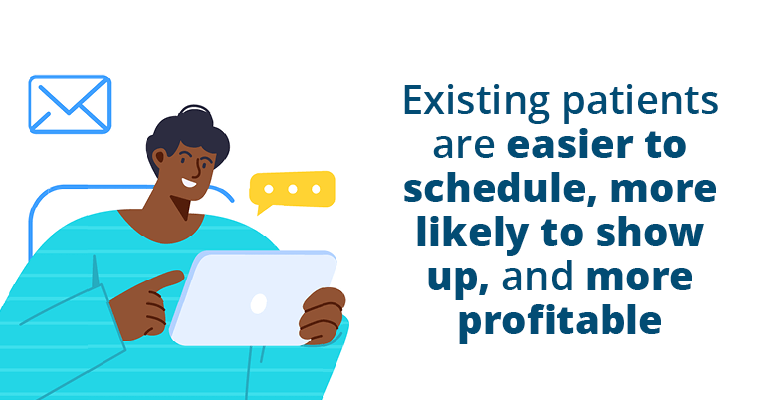
Current patients already know, like, and trust you. They aren’t nervous about your office experience, and they’ve already seen your smiling faces.
So by extension, reactivating them is FAR easier (and more profitable) than scheduling a new patient and building trust from scratch.
Reactivating your existing clients is often enough to fill your schedule for an incredibly long time:
In fact, most patient databases are hiding $300k to $800k in easy-to-schedule clients.
That easy revenue is just sitting there, and all you need to capitalize on it is the right dental marketing. Text messages are vital here since they can connect with people in a friendly, comfortable, and conversational manner.
Fortunately for you, we’re here to help you tap into that revenue (without running yourself ragged or breaking the bank).
Roadside Dental Marketing actually has ways to automate the entire process, meaning you don’t have to lift a finger!
Want to know more?
Get in touch…Click to open a new window… to request a free coaching session with our experts. We provide a complimentary snapshot of your numbers using Dental Intel to show you exactly how much easy revenue you’re sitting on.
No guesswork, no vague promises – just reactivated patients filling your schedule.
About the Author
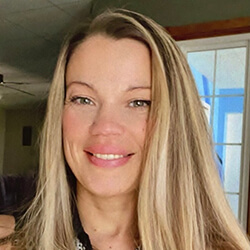
Milena brings over 12 years of experience in Dental Office Operation, Marketing, Sales, and Business Development.
She created the marketing and sales process that contributed from $400K to 1.4 million dollars of additional production within 1 year. She mastered the treatment presentation process, increasing the doctor’s production from $325/hr to $725/hr and the hygienist’s production from $130/hr to $275/hr.
Through amazing systems, clinical skills, and office culture, she helped that office become THE place for cosmetic and restorative dentistry.
Since then, she’s coached dental offices and is passionate about continuing to serve the dental community.
Learn more about Roadside Dental Marketing here.…Click to learn more in a new window…




